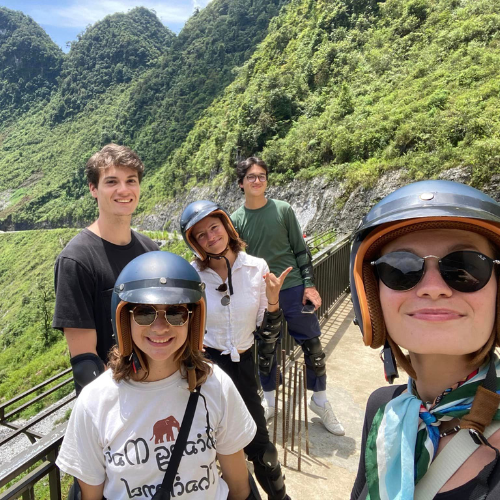How Our Perceptions Shape the Value We Assign to Nature
Tour brief
Our understanding and valuation of nature are deeply rooted in perceptions that are often shaped by cultural, psychological, and sensory influences. Just as Can Fish Teach Us About Value and Perception? explores how fish serve as a mirror to human perceptions of natural worth, this article delves into how our perceptions, in turn, influence the value we assign to the environment. Recognizing these perceptual frameworks is essential to fostering a more intrinsic and interconnected appreciation of nature, which ultimately guides our conservation efforts and ethical responsibilities.
1. Reframing Perception: How Cultural and Personal Contexts Influence Our Valuation of Nature
a. The role of cultural narratives in shaping environmental perceptions
Cultural stories, myths, and media significantly influence how societies perceive natural elements. For instance, indigenous cultures often view rivers and forests as living entities with spiritual significance, fostering a sense of sacredness. Conversely, Western societies have historically commodified nature, emphasizing its utility for economic growth. These narratives shape collective attitudes—either fostering reverence or exploitation—affecting policy and individual behavior.
b. Personal experiences and biases that distort or enhance our valuation of natural elements
Individual encounters with nature—such as childhood memories of lakes or mountains—can deepen emotional bonds, elevating perceived value. Conversely, personal biases, like fears or stereotypes, may diminish appreciation. For example, someone who had a negative experience with insects might undervalue their ecological role, despite their importance in pollination and food webs.
c. Case studies illustrating differing perceptions across societies and individuals
Research shows that urban populations often see parks and green spaces as mere recreational amenities, while rural communities perceive them as vital ecological systems. In Japan, cherry blossoms symbolize transient beauty, fostering cultural reverence, whereas in other cultures, similar natural phenomena might be viewed as ordinary or utilitarian.
2. The Psychology Behind Valuing Nature: Cognitive Biases and Emotional Attachments
a. How cognitive biases like anthropomorphism and conservation bias affect perception
Anthropomorphism, attributing human qualities to animals and ecosystems, often enhances emotional bonds, leading to increased conservation interest. However, it can also distort ecological understanding, resulting in misguided priorities. Conservation bias may cause us to prioritize charismatic megafauna, like pandas, over less “appealing” but ecologically critical species.
b. Emotional connections to nature and their impact on perceived value
Emotional bonds—developed through personal experiences or cultural narratives—heighten awareness and valuation. For example, community-led rainforest preservation often stems from local spiritual or emotional ties, which motivate sustainable behaviors beyond economic considerations.
c. The paradox of conservation: when perceived rarity elevates or diminishes value
Rarity can both increase perceived value—making species like the snow leopard highly sought after—and diminish it when scarcity leads to neglect or exploitation. This paradox underscores the importance of perception in shaping conservation strategies that recognize intrinsic ecological worth.
3. Perception and Economic Valuation: Beyond Market Prices
a. The limitations of economic metrics in capturing true ecological value
Market prices often fail to reflect ecological services like pollination, water purification, and climate regulation. For instance, the value of a wetland’s flood control benefits is rarely captured in local real estate or product markets, yet its ecological significance is profound.
b. Non-market valuation methods: ecological, aesthetic, and spiritual worth
Methods such as contingent valuation, ecological footprint analysis, and cultural services assessments attempt to quantify intangible values. For example, spiritual connections to sacred groves in India contribute to their preservation, despite lacking direct market value.
c. Implications for policy-making and environmental stewardship
Incorporating perception-based valuations encourages policies that prioritize ecological integrity and cultural significance. Recognizing intrinsic worth can lead to more sustainable land management practices that transcend financial metrics.
4. Visual and Sensory Influences on Perception of Natural Value
a. The impact of visual aesthetics and biodiversity on perceived importance
Biodiverse landscapes with vibrant colors and complex structures are often perceived as more valuable. Studies show that visually appealing ecosystems attract public support and funding—e.g., the UNESCO World Heritage Sites—highlighting the power of aesthetics in valuation.
b. How sensory experiences (sound, smell, tactile interactions) deepen or diminish value
Auditory experiences like bird songs or flowing water can evoke tranquility, increasing perceived ecological importance. Conversely, foul odors or noisy pollution diminish perceived natural value, affecting public and policy responses.
c. The role of media and imagery in shaping public perception of nature’s worth
Documentaries, photographs, and social media campaigns shape perceptions by highlighting beauty, rarity, and ecological crises. For instance, the viral images of coral reefs have catalyzed global conservation movements, demonstrating the influence of visual storytelling.
5. Perception Shifts Through Education and Awareness
a. How educational initiatives transform perceptions and values over time
Environmental education programs increase knowledge and empathy, shifting perceptions from viewing nature as a resource to recognizing it as an interconnected system. For example, school curricula that include local ecological projects foster lifelong conservation attitudes.
b. The impact of conservation success stories on societal valuation of ecosystems
Stories like the recovery of the Bald Eagle or reforestation in Costa Rica demonstrate tangible benefits, inspiring pride and intrinsic respect for ecosystems, which influence public perceptions and policy priorities.
c. Strategies to foster perceptual shifts towards recognizing intrinsic and interconnected value
- Promoting ecological literacy through community-based programs
- Using media to showcase ecosystem interconnectedness and intrinsic worth
- Encouraging experiential learning, such as nature immersion and citizen science
6. The Ethical Dimensions of Perception and Value
a. Ethical considerations in perceiving and valuing non-human life forms
Perceptions influence moral responsibilities. Recognizing animals and ecosystems as beings with intrinsic worth challenges anthropocentric views and supports animal rights and conservation ethics.
b. Perception-driven moral responsibilities towards nature
When society perceives nature as a moral entity, it fosters stewardship. For example, the concept of ‘Mother Earth’ in many cultures embodies moral duties to protect and respect the environment.
c. The influence of perception on environmental justice and equity
Perceptions often underpin policies that favor certain groups over others. Recognizing the intrinsic and interconnected value of ecosystems can promote equitable resource distribution and respect for indigenous land rights.
7. Connecting Back: How Our Perceptions Inform the Lessons Fish Can Teach Us About Value and Perception
a. Reflecting on how shifting perceptions deepen our understanding of natural valuation
As we learn from the ways fish are perceived—ranging from mere commodities to sentient beings with intrinsic worth—we recognize that perceptions are malleable. This awareness can lead to more holistic valuation approaches that include ecological and cultural dimensions.
b. The importance of perception in recognizing the intrinsic worth of all species, including fish
Understanding that perception influences our valuation helps us see beyond superficial qualities. Fish, often undervalued, teach us about the need to appreciate species for their ecological roles and intrinsic existence, fostering a shift from exploitation to respect.
c. Revisiting the parent theme: integrating perception-based insights to foster sustainable relationships with nature
By acknowledging how perceptions shape our values, we can develop strategies—such as education, storytelling, and sensory engagement—that reinforce the intrinsic value of all living beings. This integrative approach promotes sustainability, ethical responsibility, and a deeper connection to the natural world.















